From thick and translculent cakes to ruby red chunks in coconut milk, water chestnut’s interesting taste and crunch make them an uncommon ingredient in desserts in East Asia
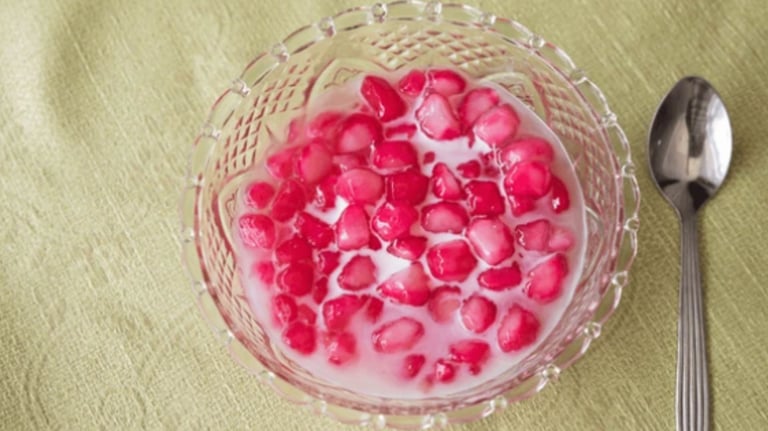
You might know water chestnuts by the name singhara or pani fal, because that’s exactly what it is a kind of water fruit. East Asian cuisine loves them so much that they make cakes, and dessert soups out of them. Water chestnuts are crunchy and white with a sweet but meaty taste to them that is delicious on its own, in most cases, it can be eaten as a fruit despite being a vegetable of sorts. But, East Asian cuisine has come up with ways to use it in their desserts.
1. Ma Tai Go
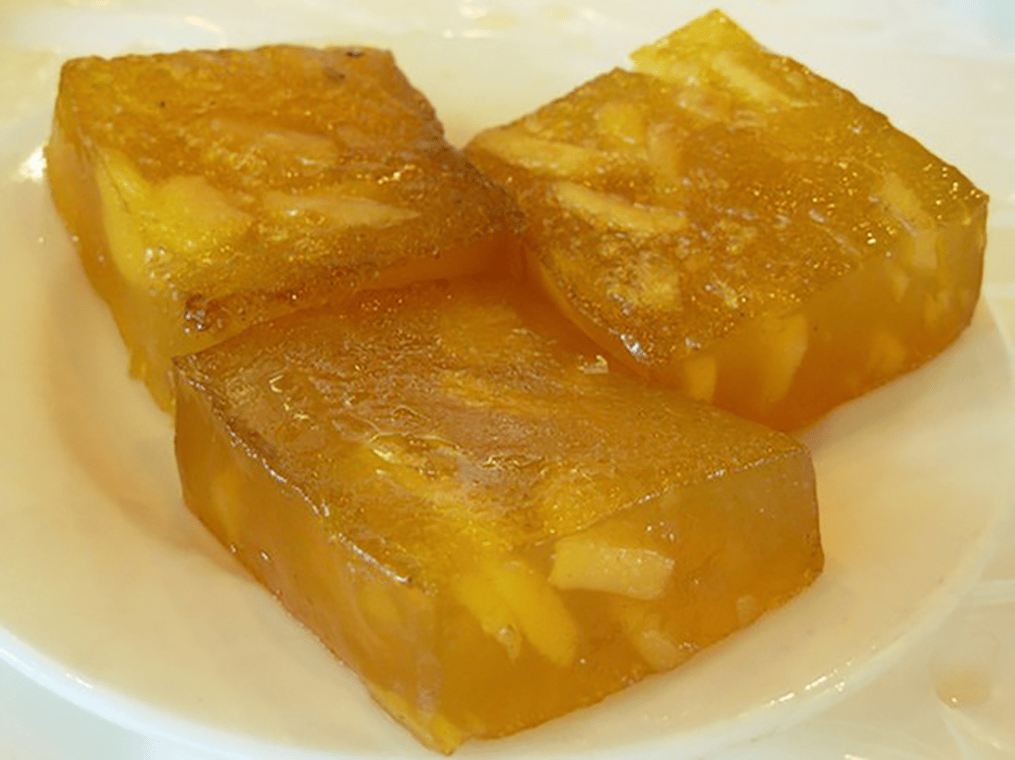
This is a Chinese dim sum that uses water chestnut pieces, brown sugar and water chestnut flour to create a gelatinous dessert that is delicious and is often called a kind of Chinese cake. In fact, it kind of looks like an orangish-yellow slime when prepared with the diced bits of water chestnuts suspended in it. It's cut into rectangular slices to resemble a jiggly cake. Just like many Chinese desserts, the ingredients are cooked and steamed to result in an unusual but tasty cake with a bit of crunchiness because of the water chestnuts in it.
2. Tub Tim Grob
The crunchy water chestnuts are cut down into small pieces and wrapped in tapioca dough that is boiled and served in coconut milk and sweet syrup like most Thai desserts. It's a refreshing dessert to have on hot summer days when the humidity gets to you. It's called crispy (grob or krob) rubies because of the crunchy factor of the vegetable and the tiny pieces wrapped in dough resembling the red pomegranate seeds. The colour is attained by using food colouring, generally, it comes in red and blue which is a delight to eat as it is a delight to gaze on. Thapthim Krop and Tub Tim Grob are the same desserts featuring the crunchy red rubies.
3. Thai Tako
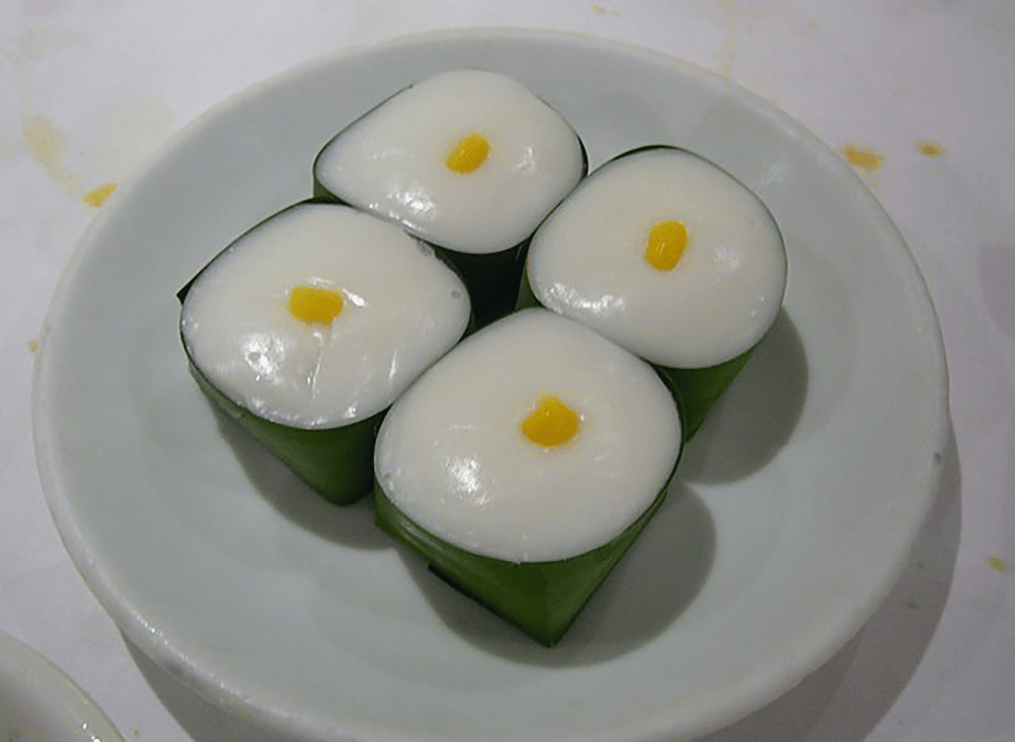
This is a Thai coconut layered dessert, also popular as Khanin Tako or pandan cups pudding, where one layer is a thick and creamy coconut pudding and the other a glossy pudding that can be any flavour, usually having pandan leaves giving it a green hue and having small pieces of water chestnuts or soft coconut meat in it. The latter usually is the bottom layer but can be turned upside down for a more attractive dessert. For both puddings, some kind of plant starch or arrowroot is used whether tapioca or mung bean to thicken both puddings so it almost has a gelatinous and jiggly texture. Both of the freshly cooked pudding layers are scooped into a boxy cup made out of pandan leaves and chilled until fully set.
4. Chè Thưng
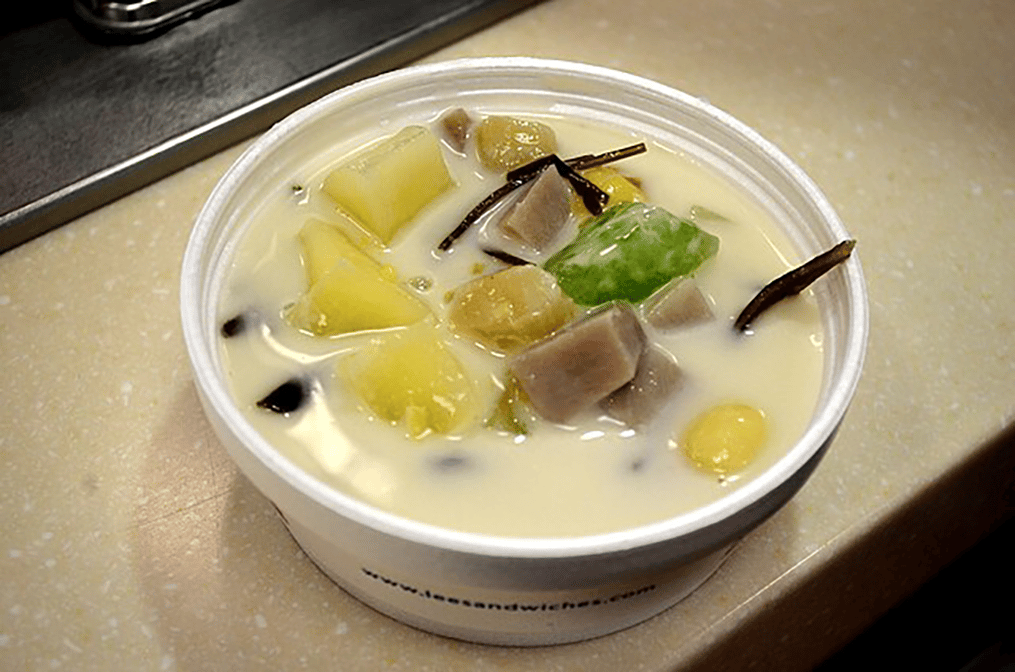
Another sweet soup, this time from Vietnam, Chè Thưng is also called Baba Che and primarily uses mung beans cooked in creamy coconut milk. It has an assortment of ingredients that go into the sweet soup – taro, khoai lang bí (local sweet potato), cassava, tapioca and some recipes even call for water chestnuts. Served warm or chilled, both taste equally delicious for the cold one is refreshing to eat and slurp on hot days.
5. Mah Tai Kang
Called the water chestnut egg soup dessert in Cantonese, Mah Tai Kang comes from China. It's delicious and refreshing on its own but is also said to taste amazing with a plate of pancakes. The dessert soup has a strong eggy smell and the crunch that comes from the pieces of the chopped water chestnuts. It's a simple recipe that uses rock sugar, water chestnuts, and beaten egg whites. The water chestnuts are cooked first and like one makes an egg drop soup, the egg whites are slowly poured towards the end of the cooking process.
6. Osmanthus Water-Chestnut Pudding
Osmanthus is a common flower used to make tea, desserts and biscuits in some East Asian countries notably China and Japan. It's a little similar to the elderflower in terms of appearance and the pudding uses dried Osmanthus flowers and diced water chestnuts that are cooked in water thickened with water chestnut starch, brown sugar and a little rock salt. It's put into a loaf pan or a cake tin and steamed to form a thick cake-like pudding. It darkens to a deep brown due to the brown sugar and tastes quite similar to the Mah Tai Kang, only this one has the fragrance of the Osmanthus flowers.
Like This Article?
More Like This


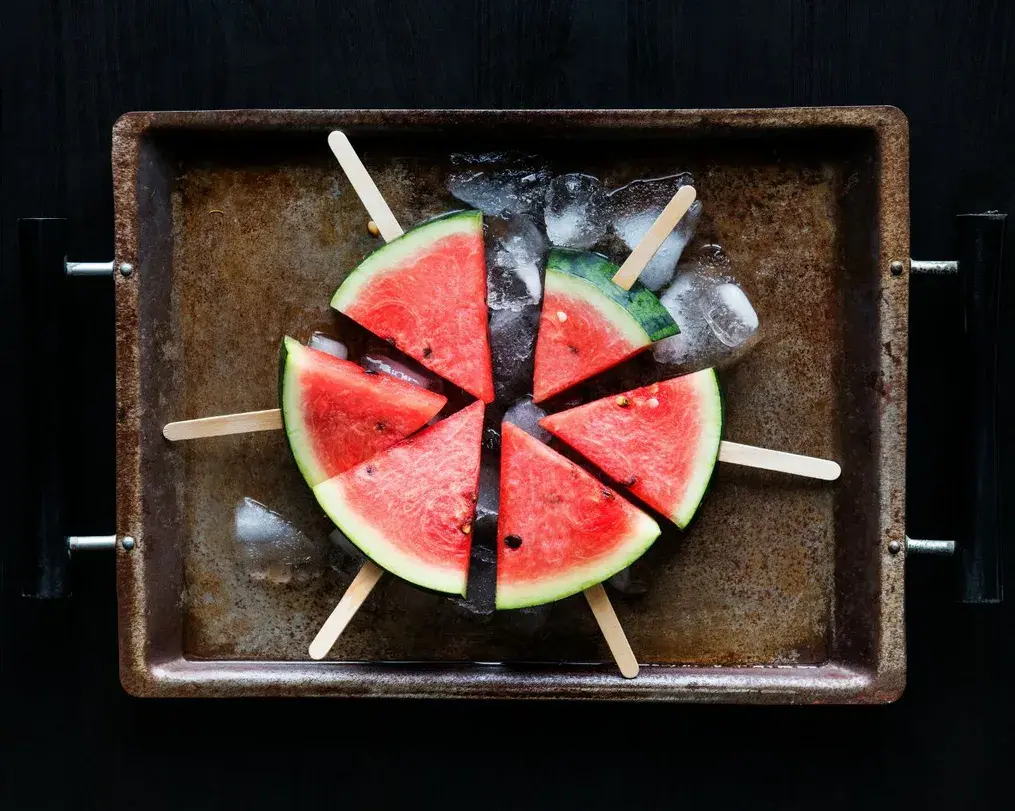
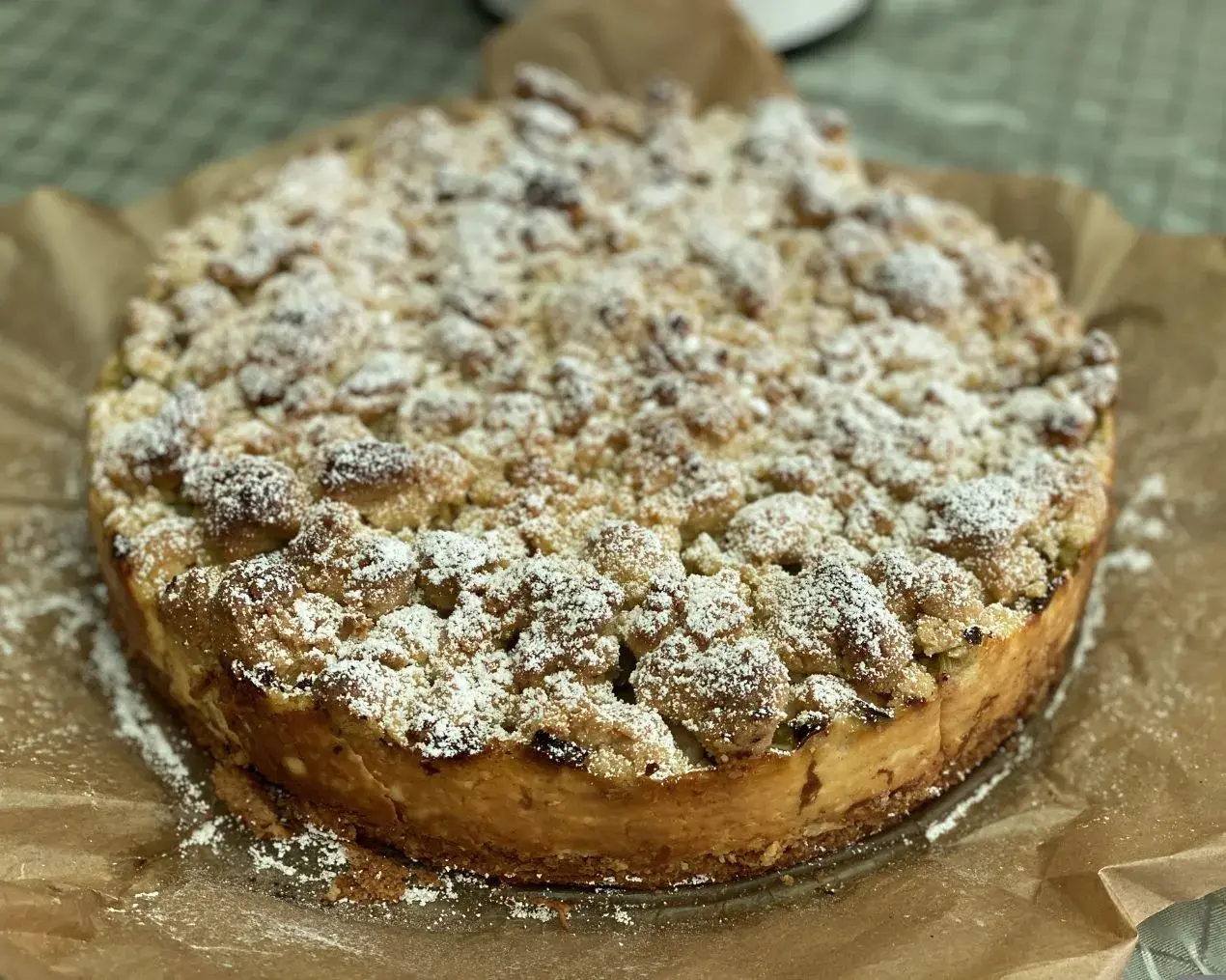
Popular Articles





Trending Web Stories
Curated Recipes


















